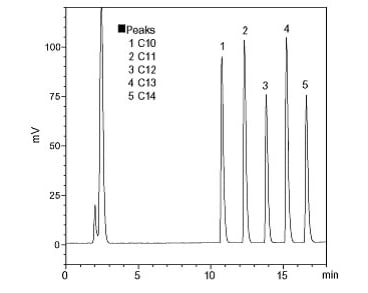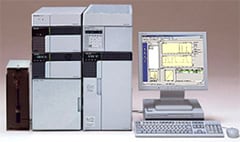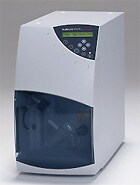All You Need To Know About Advanced Plastics Analysis
Analysis of Anionic Surfactants (GPC)
To evaluate the properties of synthetic polymers, GPC systems are widely used to measure their molecular mass distribution.
The following shows the results from analyzing five components of sodium linear alkylbenzene sulfonate (LAS) (alkyl group: C10 to C14). 20 µL of a standard solution containing 0.1 g/L of each component was injected.
The evaporative light scattering detector used in this example is able to detect almost all compounds, except volatile compounds. It also allows using gradient elution. Therefore, it provides an effective method for analyzing substances with no UV absorbance, which previously required isocratic analysis using a refractive index detector.

Chromatograph of LAS (20 µL injection of 0.1 g/L each)
GPC System

The key factors for accurate molecular weight measurements are the precision and stability of the pump. The Prominence GPC system provides high-precision data for all types of GPC measurements due to its high-precision micro delivery with 3.7 nL resolution.
Evaporative Light Scattering Detector

This detector evaporates the mobile phase to separate the target compounds into microparticles, and then measures the scattered light from those particles. In principle, it is able to detect almost all compounds. Since detection sensitivity does not depend on the compound and is approximately based on the absolute quantity, it is especially useful for investigating the concentrations of unknown compounds. Refractive index detectors are also used for similar purposes, but this evaporative light scattering detector eliminates mobile phase effects, so it can even be used under gradient elution conditions.


